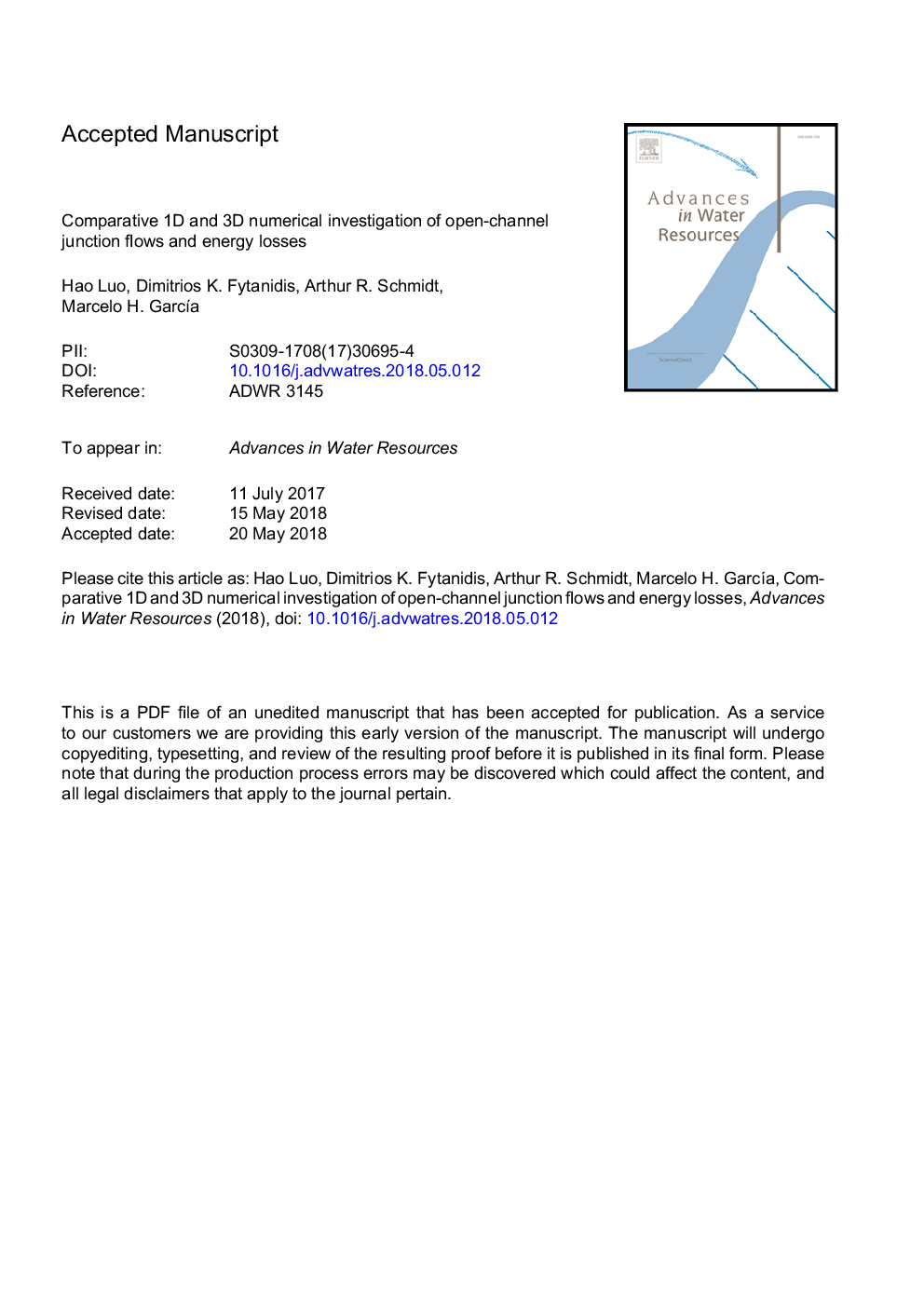| کد مقاله | کد نشریه | سال انتشار | مقاله انگلیسی | نسخه تمام متن |
|---|---|---|---|---|
| 8883281 | 1625594 | 2018 | 48 صفحه PDF | دانلود رایگان |
عنوان انگلیسی مقاله ISI
Comparative 1D and 3D numerical investigation of open-channel junction flows and energy losses
دانلود مقاله + سفارش ترجمه
دانلود مقاله ISI انگلیسی
رایگان برای ایرانیان
کلمات کلیدی
موضوعات مرتبط
مهندسی و علوم پایه
علوم زمین و سیارات
فرآیندهای سطح زمین
پیش نمایش صفحه اول مقاله

چکیده انگلیسی
The complexity of open channel confluences stems from flow mixing, secondary circulation, post-confluence flow separation, contraction and backwater effects. These effects in turn result in a large number of parameters required to adequately quantify the junction induced hydraulic resistance and describe mean flow pattern and turbulent flow structures due to flow merging. The recent development in computing power advances the application of 3D Computational Fluid Dynamics (CFD) codes to visualize and understand the Confluence Hydrodynamic Zone (CHZ). Nevertheless, 1D approaches remain the mainstay in large drainage network or waterway system modeling considering computational efficiency and data availability. This paper presents (i) a modified 1D nonlinear dynamic model; (ii) a fully 3D non-hydrostatic, Reynolds-averaged Navier-Stokes Equations (RANS)-based, Computational Fluid Dynamics (CFD) model; (iii) an analysis of changing confluence hydrodynamics and 3D turbulent flow structure under various controls; (iv) a comparison of flow features (i.e. upstream water depths, energy losses and post-confluence contraction) predicted by 1D and 3D models; and (v) parameterization of 3D flow characteristics in 1D modeling through the computation of correction coefficients associated with contraction, energy and momentum. The present comprehensive 3D numerical investigation highlights the driving mechanisms for junction induced energy losses. Moreover, the comparative 1D and 3D study quantifies the deviation of 1D approximations and associated underlying assumptions from the 'true' resultant flow field. The study may also shed light on improving the accuracy of the 1D large network modeling through the parameterization of the complex 3D feature of the flow field and correction of interior boundary conditions at junctions of larger angles and/or with substantial lateral inflows. Moreover, the enclosed numerical investigations may enhance the understanding of the primary mechanisms contributing to hydraulic structure induced turbulent flow behavior and increased hydraulic resistance.
ناشر
Database: Elsevier - ScienceDirect (ساینس دایرکت)
Journal: Advances in Water Resources - Volume 117, July 2018, Pages 120-139
Journal: Advances in Water Resources - Volume 117, July 2018, Pages 120-139
نویسندگان
Hao Luo, Dimitrios K. Fytanidis, Arthur R. Schmidt, Marcelo H. GarcÃa,